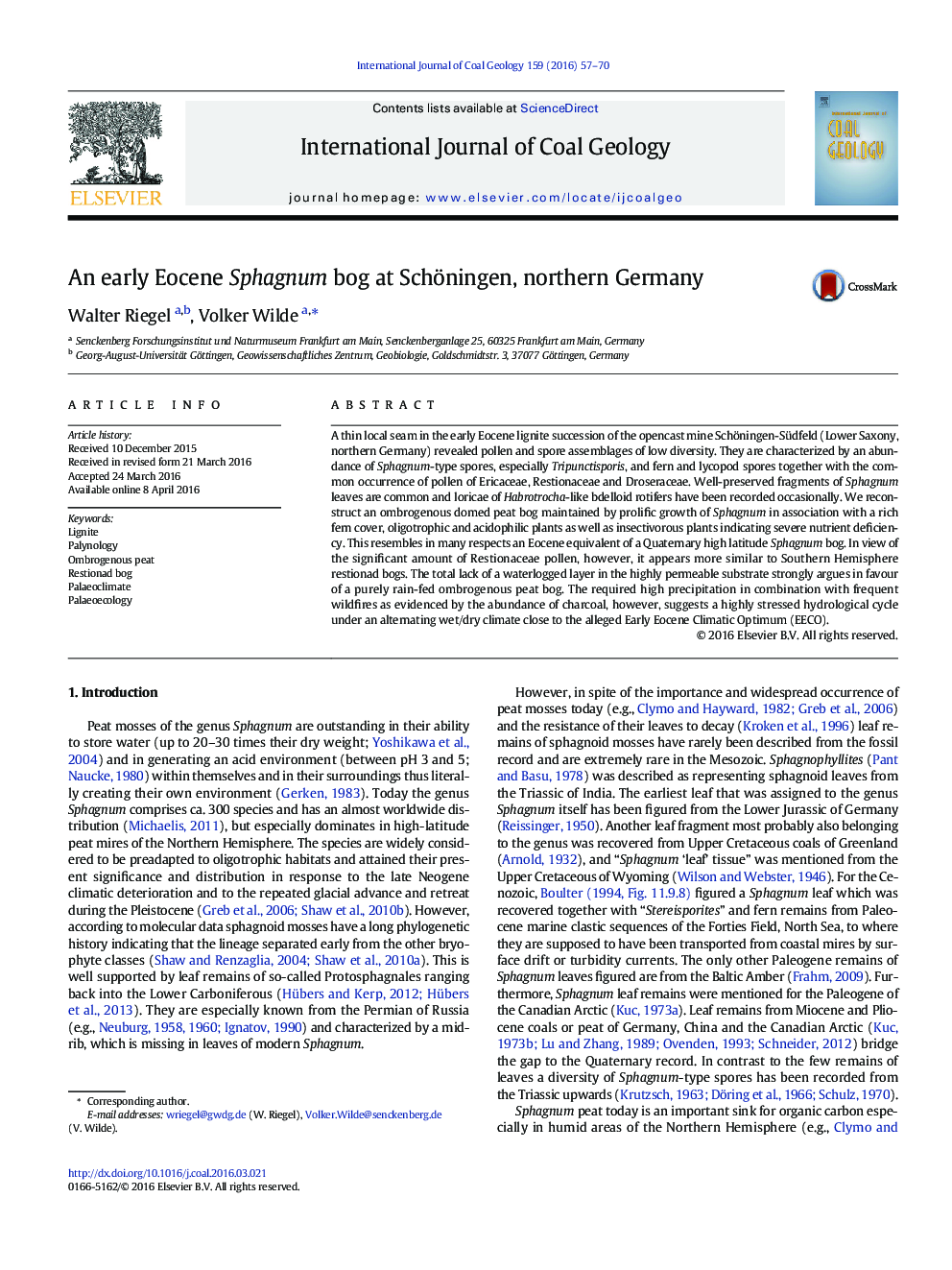| Article ID | Journal | Published Year | Pages | File Type |
|---|---|---|---|---|
| 1752805 | International Journal of Coal Geology | 2016 | 14 Pages |
•Palynomorph spectrum suggests a Paleogene domed Sphagnum peat bog.•Floristic similarities to Southern Hemisphere restionad bogs are evident.•Charcoal indicates an alternating wet/dry climate close to the EECO.•Peat bog formation in an estuarine setting
A thin local seam in the early Eocene lignite succession of the opencast mine Schöningen-Südfeld (Lower Saxony, northern Germany) revealed pollen and spore assemblages of low diversity. They are characterized by an abundance of Sphagnum-type spores, especially Tripunctisporis, and fern and lycopod spores together with the common occurrence of pollen of Ericaceae, Restionaceae and Droseraceae. Well-preserved fragments of Sphagnum leaves are common and loricae of Habrotrocha-like bdelloid rotifers have been recorded occasionally. We reconstruct an ombrogenous domed peat bog maintained by prolific growth of Sphagnum in association with a rich fern cover, oligotrophic and acidophilic plants as well as insectivorous plants indicating severe nutrient deficiency. This resembles in many respects an Eocene equivalent of a Quaternary high latitude Sphagnum bog. In view of the significant amount of Restionaceae pollen, however, it appears more similar to Southern Hemisphere restionad bogs. The total lack of a waterlogged layer in the highly permeable substrate strongly argues in favour of a purely rain-fed ombrogenous peat bog. The required high precipitation in combination with frequent wildfires as evidenced by the abundance of charcoal, however, suggests a highly stressed hydrological cycle under an alternating wet/dry climate close to the alleged Early Eocene Climatic Optimum (EECO).
